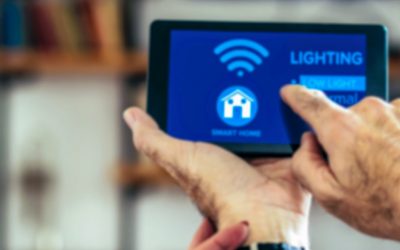What is Broadband?
 If you never had to suffer through a series of ear-splitting dial tones, electronic bleeps and bloops, and screeching static to get online, consider yourself lucky. Once upon a time, dial-up was the only way to access the internet. Today, broadband gets us there a lot faster … and quieter.
If you never had to suffer through a series of ear-splitting dial tones, electronic bleeps and bloops, and screeching static to get online, consider yourself lucky. Once upon a time, dial-up was the only way to access the internet. Today, broadband gets us there a lot faster … and quieter.
Dialing Up the Internet
Dial-up connections require nothing more than a telephone line and computer modem. When the internet was shiny and new, this proved to be an easy way to use existing infrastructure to enable consumers to surf the web. The loud, screechy noise when connecting to the internet was considered a small price to pay.
While convenient, dial-up had its drawbacks. Because telephone lines only recognized analog signals, even the most sophisticated modems were limited to transferring data at a rate of 56 kilobits (56k). Connections were slow, and factors such as the distance between the modem and the telephone company’s equipment and the number of users on the exchange affected speed and connection quality.
At the same time, households with only one phone line couldn’t make or receive calls while on the internet — and if somebody inadvertently lifted the receiver off the hook, the internet connection was lost.
Fortunately, broadband was developed in the late 1990s. This has gradually made dial-up access all but obsolete with only a handful of people in very remote areas still relying on the technology.
The FCC Defines Broadband
In simple terms, broadband is a high-speed internet connection that is always available and faster than dial-up. It’s important to note that broadband refers to a connection rather than the actual internet. Think of it as the wired connection that is attached to your router. Many people use the term Wi-Fi to refer to their internet connection, but Wi-Fi is just the technology that allows devices to communicate wirelessly.
The Federal Communications Commission (FCC) has a very specific definition of broadband: currently, it must provide a minimum download speed of 25 megabits per second (Mbps) and 3 Mbps upload speed. The FCC continually adjusts this definition based on advances in technology. In 1996, the criteria for broadband was 200 Kbps minimum download and upload speeds.
If you’re having a hard time wrapping your head around these speeds, consider this: there are 1,000 kilobits in each megabit. That makes today’s broadband speed of 25 Mbps 125 times faster than what was considered a broadband connection 25 years ago. It’s easy to understand why broadband connections are so much faster than dial-up!
Speed is just one benefit. Broadband connections are always on, so there is no need to connect or disconnect when starting and ending sessions. There’s no need for a dedicated phone line either, so you can make phone calls while simultaneously browsing the internet without the need for a second line. It’s a multitasker’s dream come true!
Transmission Technologies Deliver Broadband
Broadband can be delivered via several high-speed transmission technologies. Fiber is one such method and offers the greatest capacity for the future. Golden West’s ongoing Fiber to the Home (FTTH) project will eventually bring fiber optic technology to all subscribers in our service territory. Until then, Golden West uses other technologies, including Digital Subscriber Lines (DSL), which transmit data over traditional copper telephone lines, and cable modems, to provide broadband connections to some areas.
With many people working from home during the COVID-19 pandemic, the importance of broadband cannot be understated. Many people are nostalgic for the past, but when it comes to accessing the internet, let’s all be thankful that dial-up went the way of the dinosaur!
Sources: Some information for this article was provided by online articles from Reference.com, Easy Tech Junkie, Verizon, and the Federal Communications Commission.





